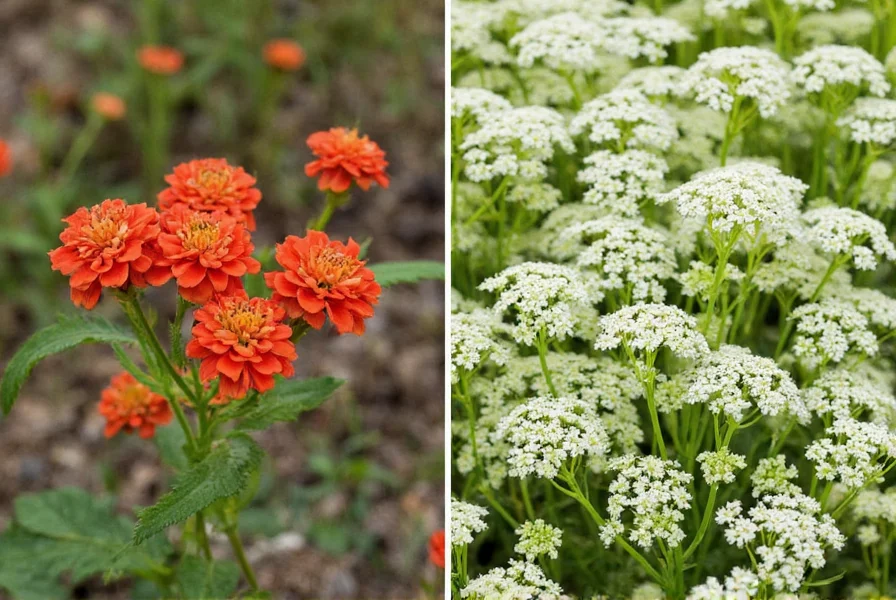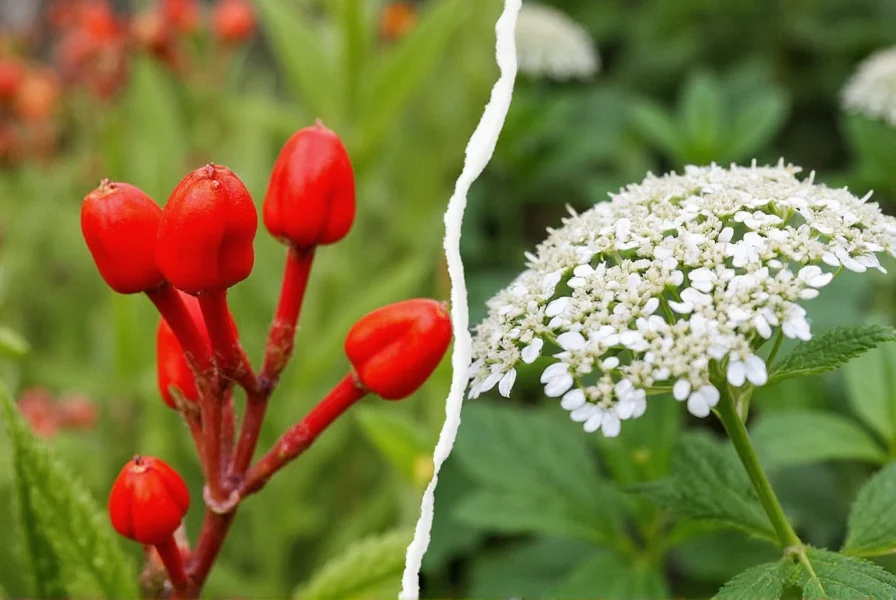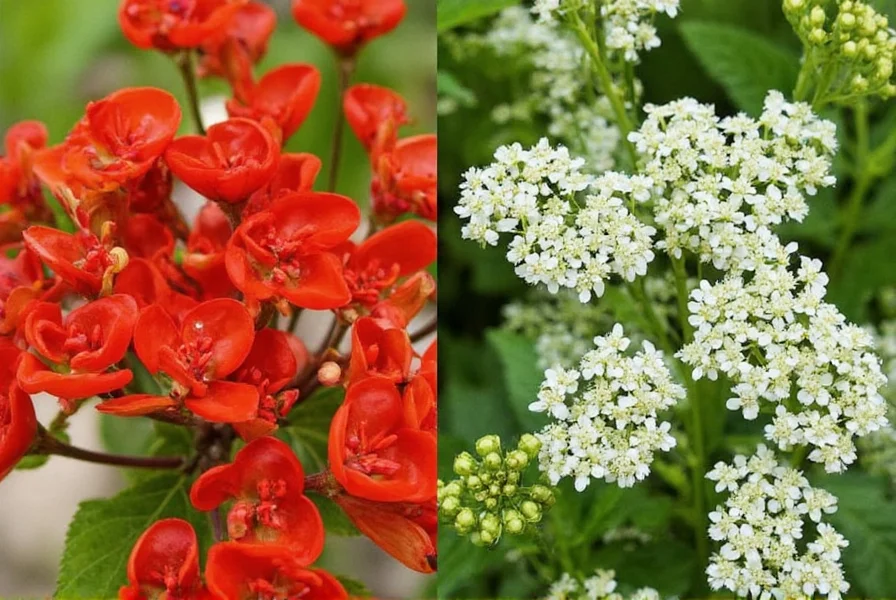Many gardeners and cooking enthusiasts encounter confusion when searching for information about "paprika yarrow," mistakenly believing these terms refer to a single plant variety. Understanding the fundamental differences between these two distinct botanical specimens is essential for proper cultivation, culinary use, and medicinal applications. This comprehensive guide separates fact from misconception while providing valuable insights for both home gardeners and natural remedy practitioners.
What Exactly is Paprika?
Paprika is not a plant itself but rather a spice produced from grinding dried fruits of various Capsicum annuum pepper varieties. Originating in Central Mexico and popularized through Hungarian cuisine, paprika ranges in flavor from sweet and mild to hot and pungent depending on the pepper varieties used. The vibrant red powder contains capsaicin compounds responsible for its heat and color, along with significant amounts of vitamin C and carotenoids.
Commercial paprika production involves selecting specific pepper cultivars, drying them thoroughly, and grinding them into fine powder. Hungarian paprika, considered the gold standard, comes from peppers grown in the Kalocsa and Szeged regions. Spanish paprika (pimentón) often undergoes smoking during processing, giving it a distinctive flavor profile. When evaluating difference between paprika and yarrow plants, it's crucial to recognize paprika's identity as a processed food product rather than a living plant.

Understanding Yarrow: The Medicinal Herb
Yarrow (Achillea millefolium) is a hardy perennial flowering plant belonging to the Asteraceae family, completely unrelated to the nightshade family that includes peppers. Named after the Greek hero Achilles who reportedly used it to treat soldiers' wounds, yarrow features feathery leaves and clusters of small white or pink flowers. This resilient plant grows wild across temperate regions of North America, Europe, and Asia, often found along roadsides and in meadows.
Traditional herbal medicine practitioners have used yarrow for centuries to address various health concerns. The plant contains achilleine, a compound that helps constrict blood vessels, making it valuable for wound care. Modern research suggests yarrow may have anti-inflammatory, antimicrobial, and digestive benefits when properly prepared. Unlike paprika which is exclusively used as a spice, yarrow serves multiple purposes including medicinal applications, companion planting in gardens, and soil stabilization.
Key Differences Between Paprika Source Plants and Yarrow
| Characteristic | Paprika (Pepper Plants) | Yarrow (Achillea millefolium) |
|---|---|---|
| Plant Family | Solanaceae (Nightshade) | Asteraceae (Daisy) |
| Botanical Classification | Capsicum annuum varieties | Achillea millefolium |
| Primary Use | Culinary spice | Medicinal herb, ornamental plant |
| Growing Requirements | Warm climate, frost-sensitive | Cold-hardy, drought-tolerant |
| Active Compounds | Capsaicin, carotenoids | Achilleine, flavonoids |
| Edibility | Fruit consumed as spice | Leaves and flowers used medicinally |
Common Misconceptions About Paprika and Yarrow
The confusion between paprika and yarrow likely stems from several factors. Some gardening forums mistakenly reference "paprika yarrow" when discussing colorful yarrow varieties, though no such hybrid exists. Additionally, certain online marketplaces incorrectly list yarrow seeds with paprika-related keywords to increase visibility. Understanding paprika spice versus yarrow herb distinctions prevents costly gardening mistakes and potential health risks from improper plant identification.
Another source of confusion involves the term "paprika" being used in some regions to describe brightly colored plants, though this is not botanically accurate. When researching growing paprika peppers versus yarrow plants, gardeners should verify they're consulting information about the correct species. Mistaking yarrow for a pepper plant could lead to unsuccessful cultivation attempts, while confusing the plants' medicinal properties could result in improper usage.

Practical Applications and Benefits
When properly identified and used, both plants offer significant benefits. Paprika enhances food flavor while providing antioxidants, with Hungarian sweet paprika ideal for goulash and Spanish smoked paprika perfect for chorizo. The medicinal uses of yarrow compared to paprika differ substantially—yarrow tea may soothe digestive issues, while yarrow poultices can aid minor wound healing. Gardeners appreciate yarrow's ability to attract beneficial insects and improve soil health, whereas pepper plants require more attentive care but reward with versatile culinary ingredients.
For those interested in companion planting, understanding what is the difference between paprika and yarrow becomes particularly important. Yarrow makes an excellent companion plant for roses and vegetables, repelling pests while attracting pollinators. Pepper plants, however, benefit from different companion plants like basil and marigolds. Attempting to grow these plants together without understanding their distinct needs often leads to suboptimal results for both.
Identifying Authentic Information Sources
When researching either plant, verifying information credibility is crucial. Reputable botanical gardens, university extension services, and established horticultural organizations provide accurate details about both plants' characteristics and uses. Be wary of websites conflating paprika and yarrow or making unsupported health claims about either plant. The USDA Plants Database and Royal Horticultural Society offer reliable identification resources for both species.
For culinary applications involving paprika, professional cooking resources and spice authorities provide trustworthy usage guidelines. Those exploring medicinal uses of yarrow should consult evidence-based herbal medicine references rather than anecdotal sources. Understanding is yarrow related to paprika helps prevent dangerous misinformation, particularly regarding internal consumption of herbal preparations.











 浙公网安备
33010002000092号
浙公网安备
33010002000092号 浙B2-20120091-4
浙B2-20120091-4